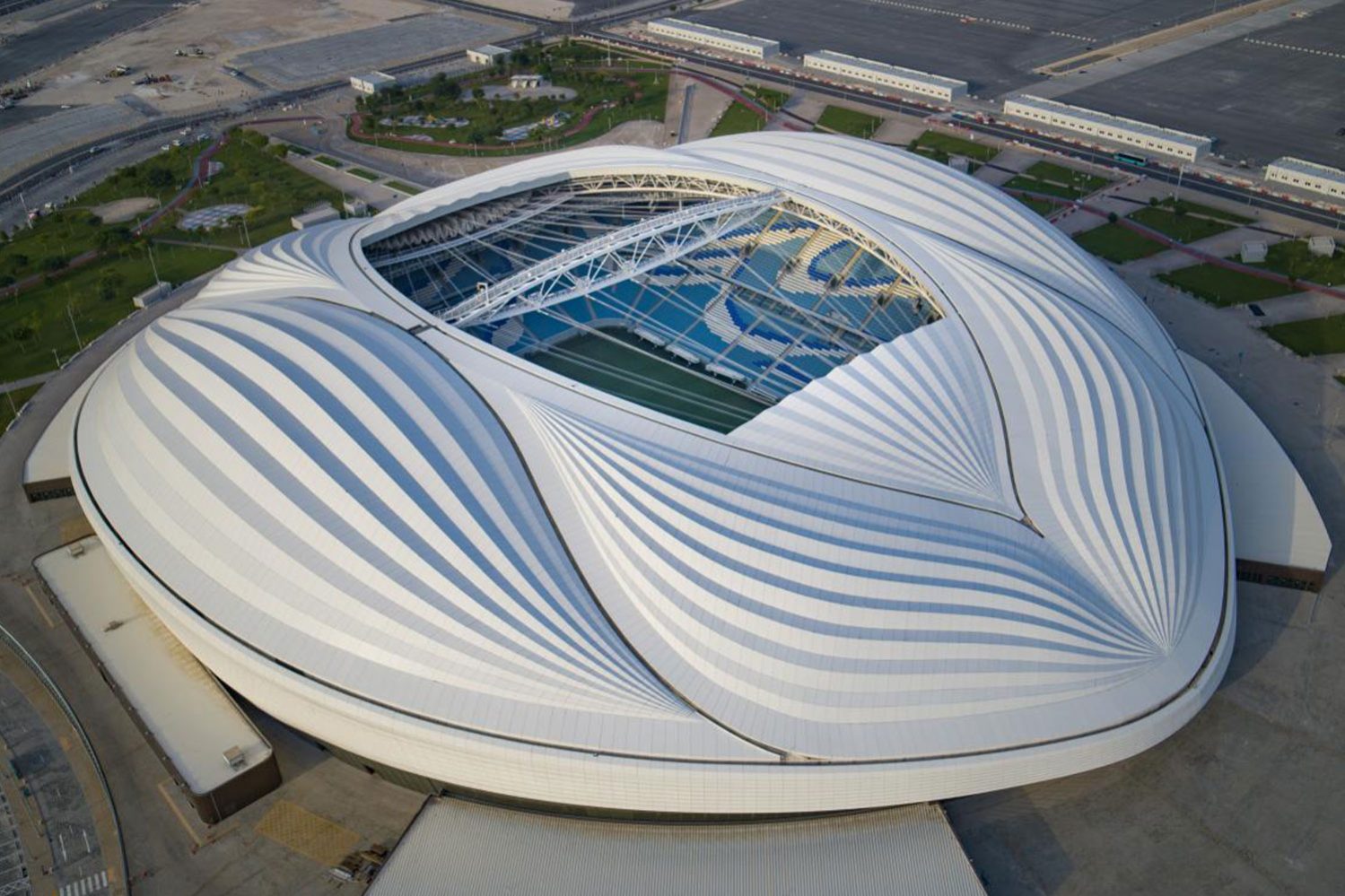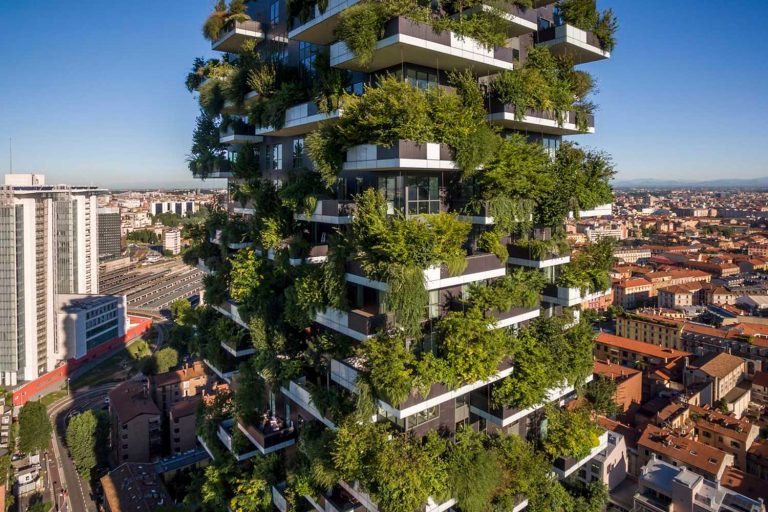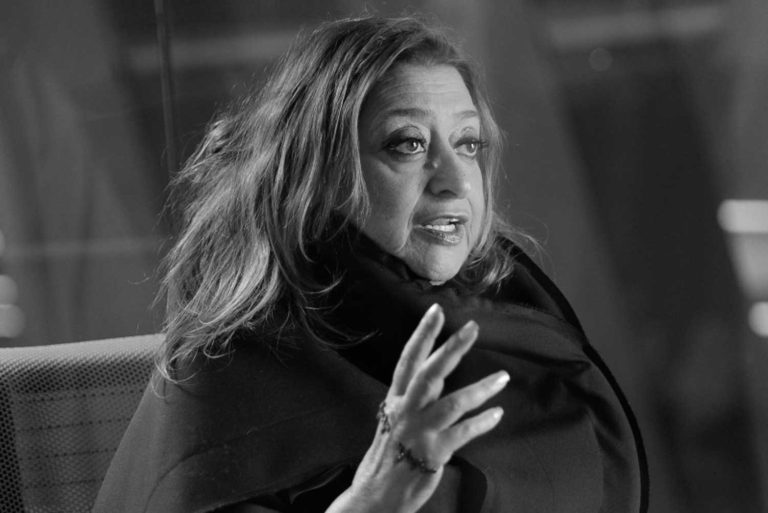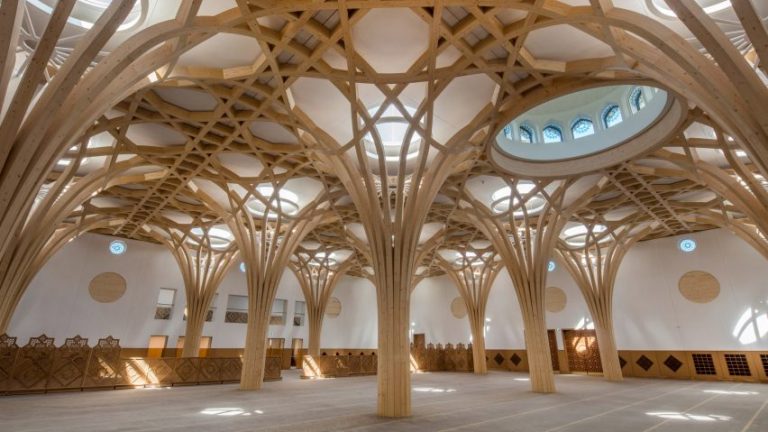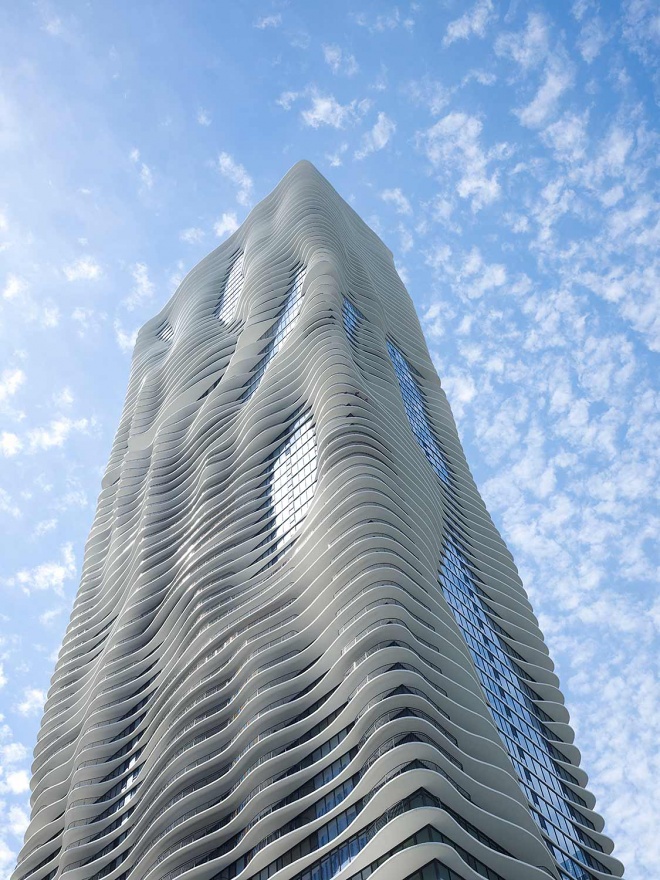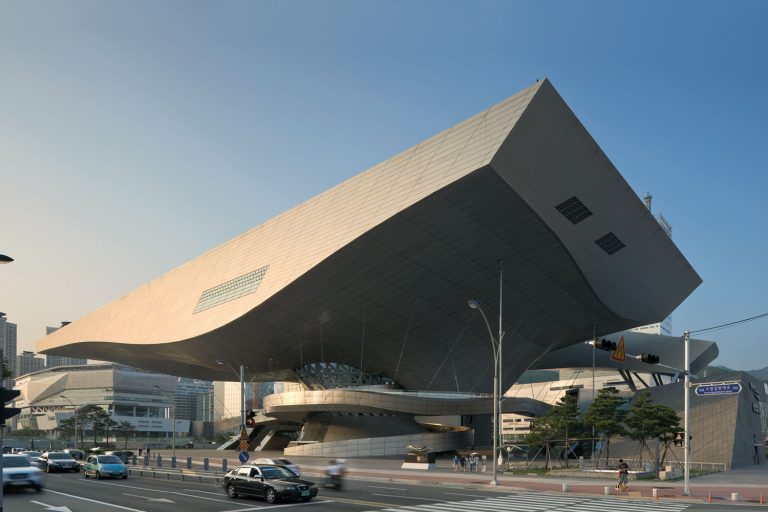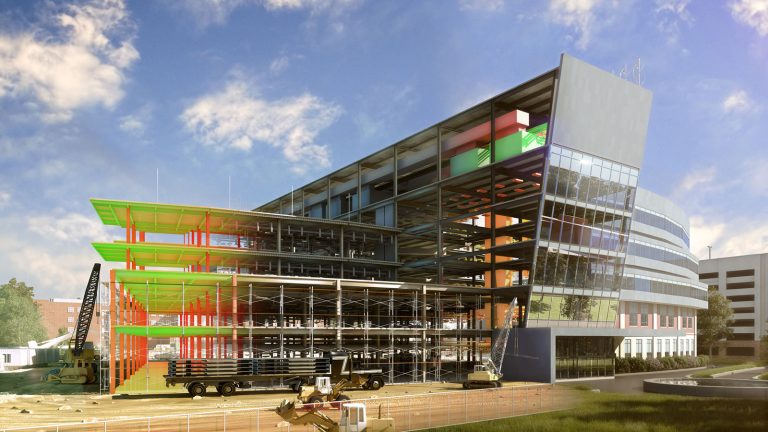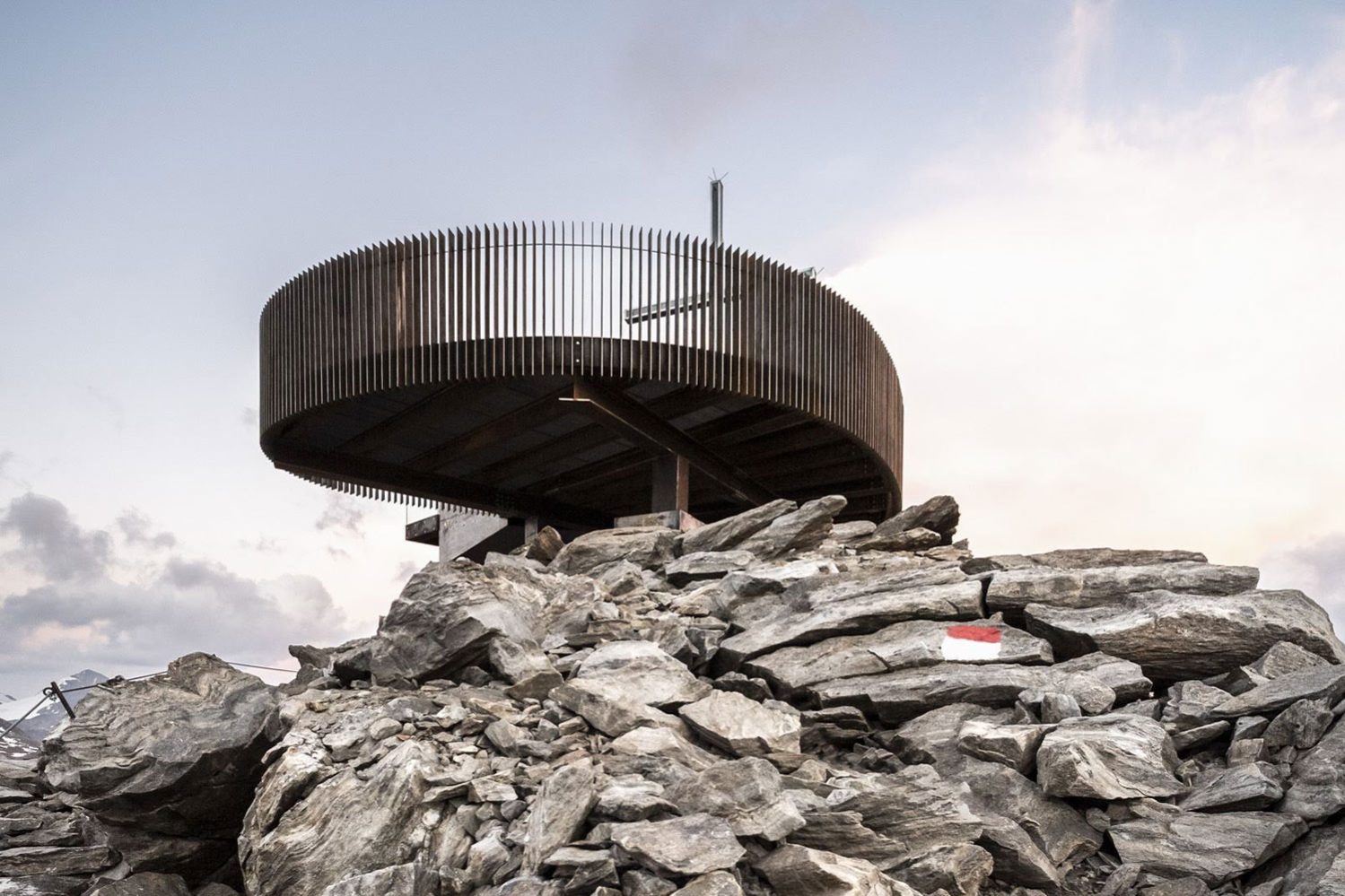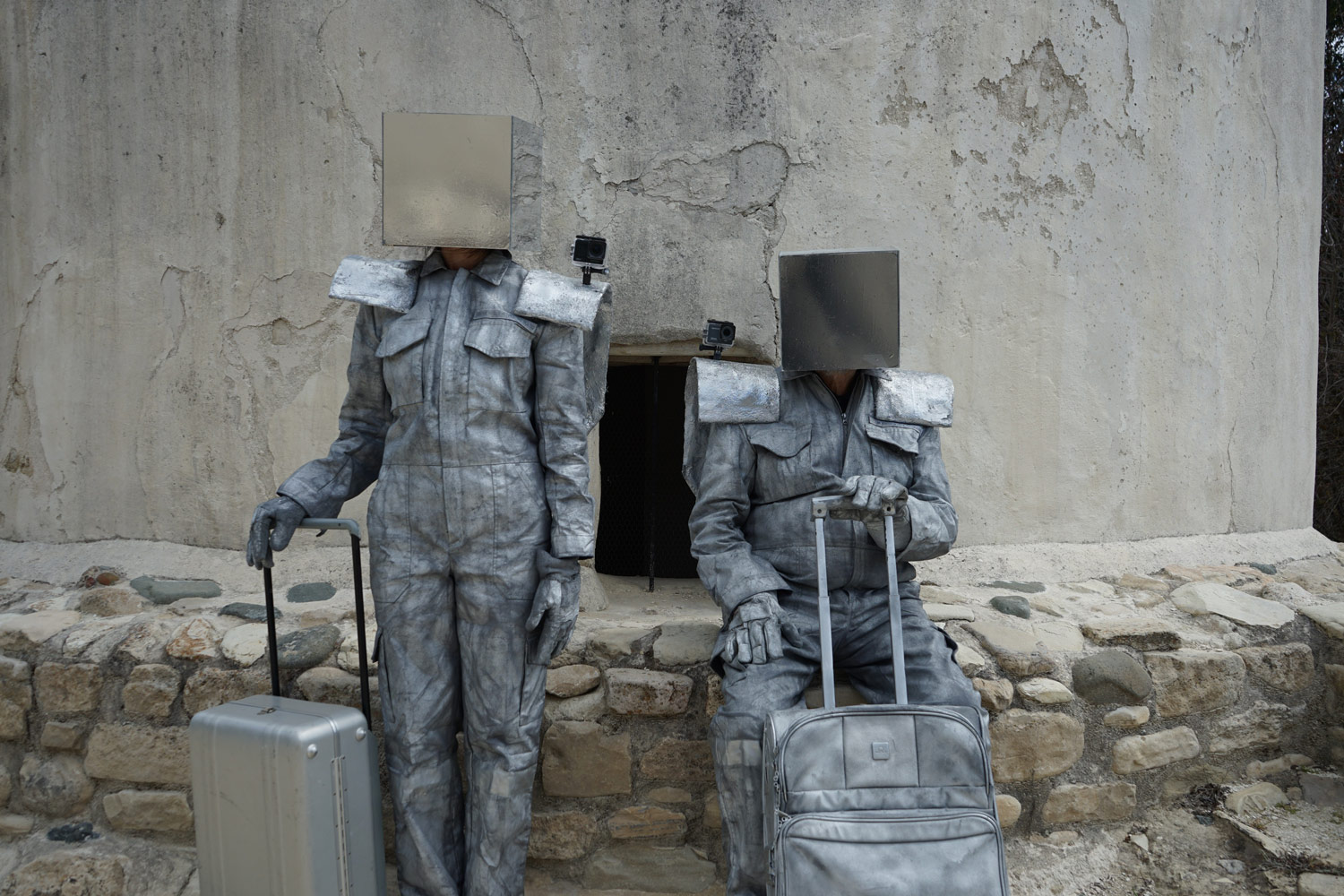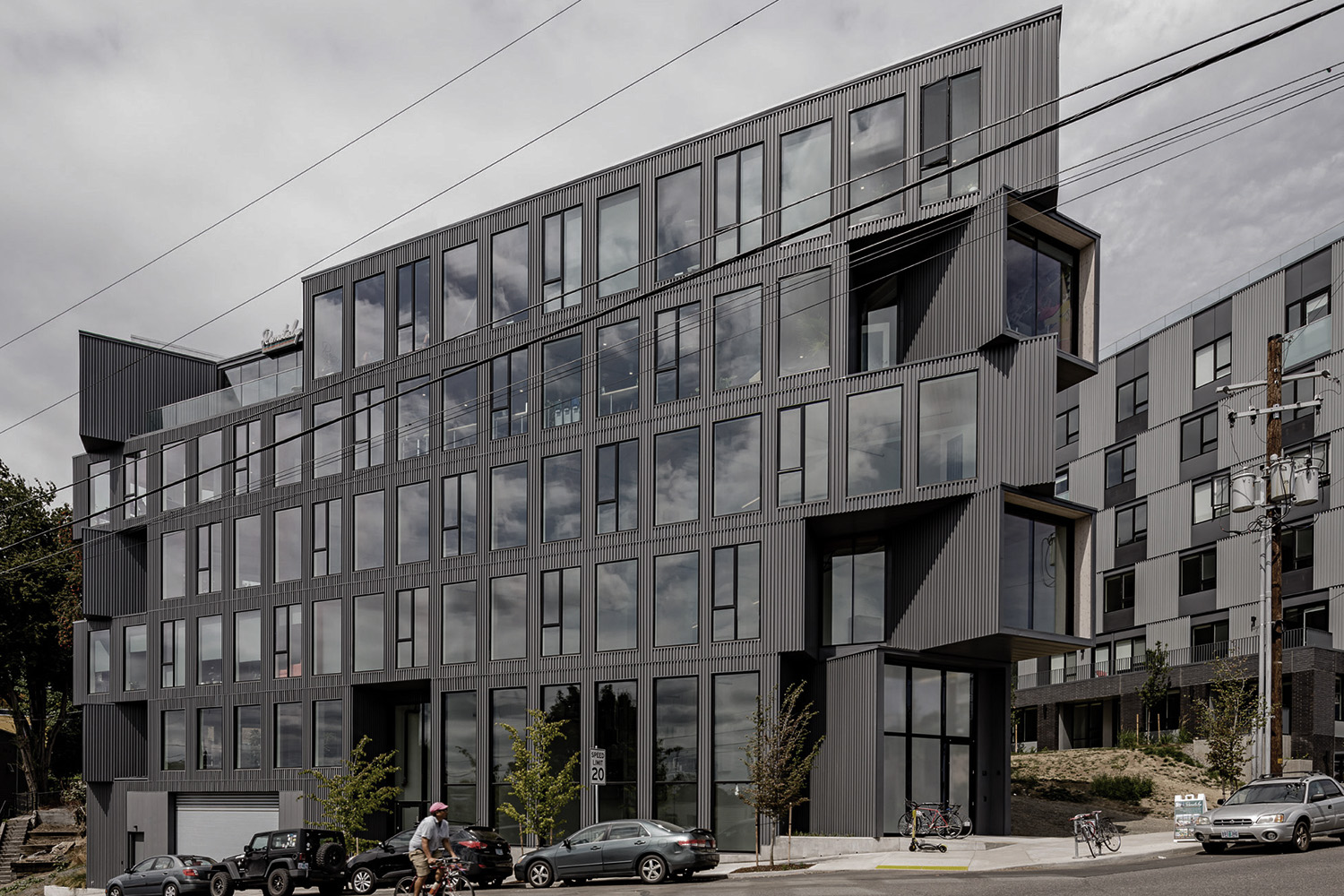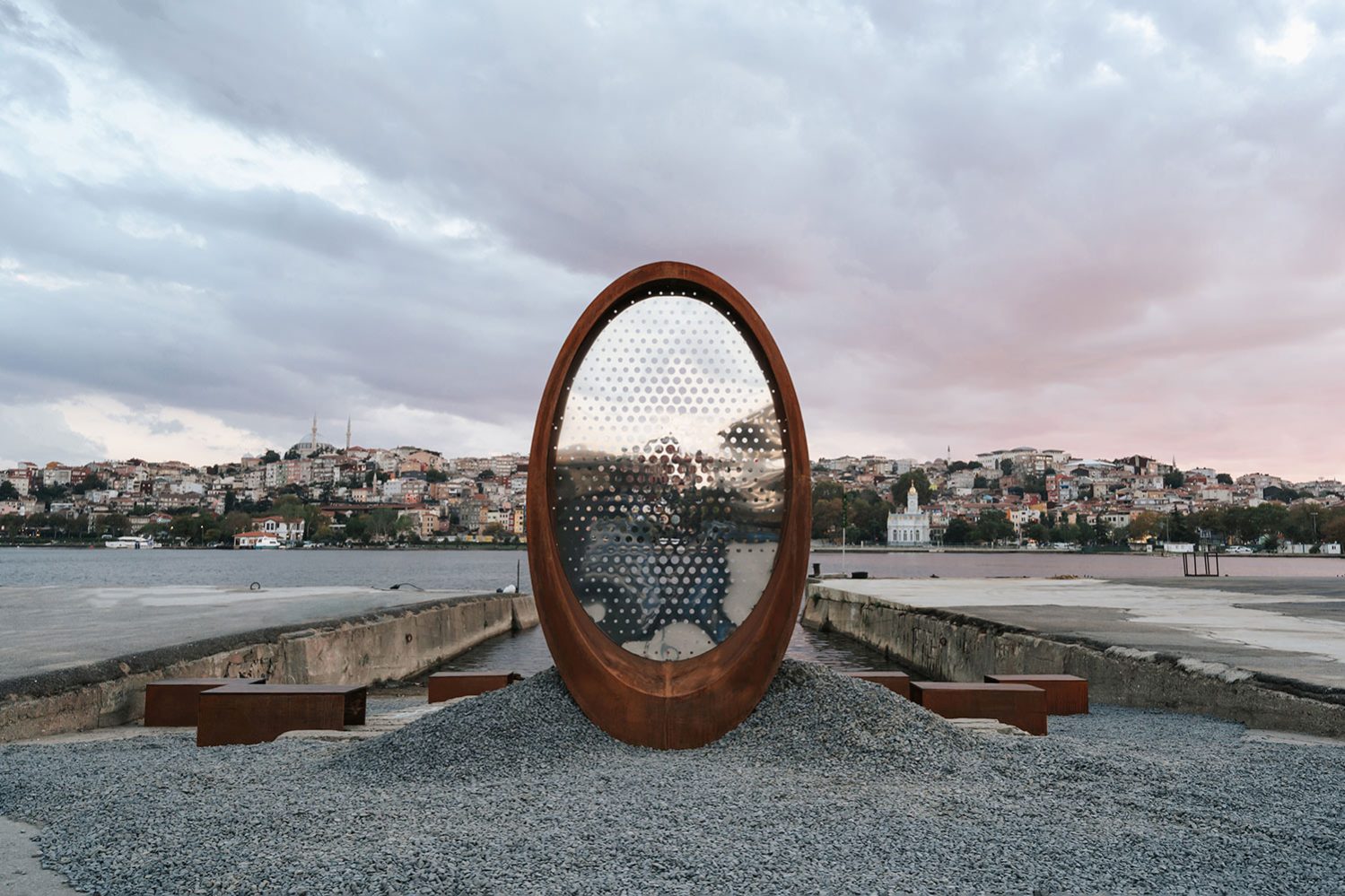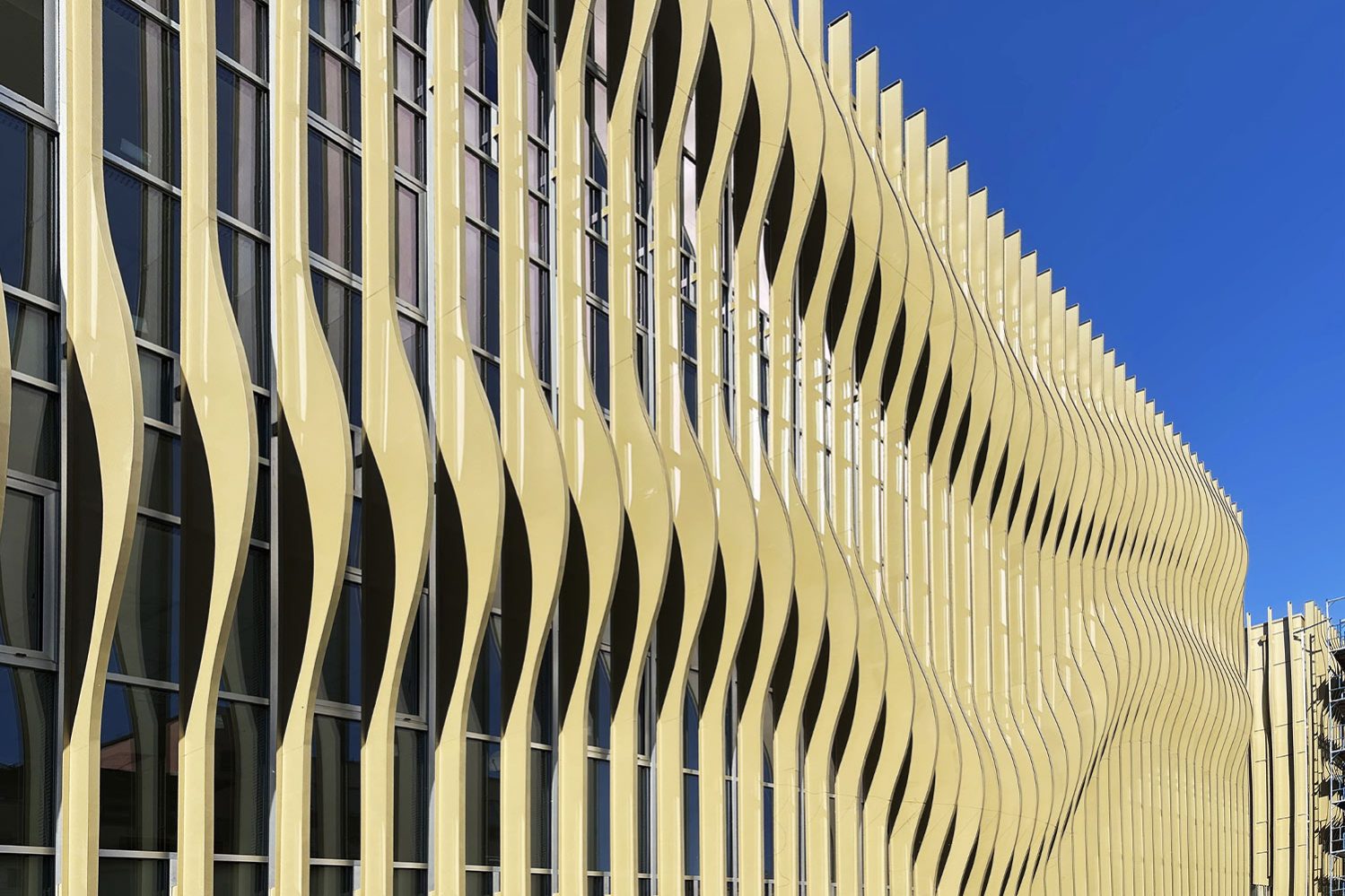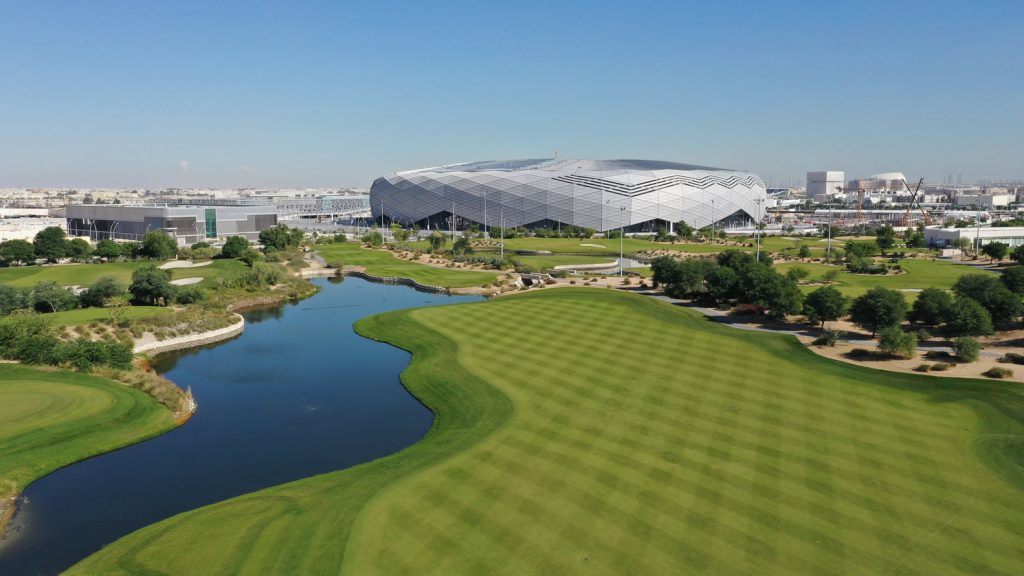
FIFA 2022 World Cup is scheduled to take place in Qatar from 20 November to 18 December 2022. This will be the first World Cup held in the Arab World.
Qatar renovated some stadiums and built new structures for World Cup. Qatar worked with many known architectural construction offices for new stadiums, Zaha Hadid Architects, Foster + Partners, AECOM, and more. Also, the first temporary venue in FIFA World Cup history was constructed in Doha.
But on the other hand, since Qatar was selected as a host country of the 2022 FIFA World Cup, the construction of the stadiums has been highly controversial. The stadium projects have been criticized for the working conditions for migrant workers, also by Amnesty International.
Let’s take a look at eight 2022 World Cup stadiums!
Al Bayt Stadium

Al Bayt Stadium’s role as host for the FIFA World Cup 2022 Opening Match.
The magnificent tent-like structures of the 200,000 sqm stadium, inspired by Qatar’s nomadic people’s Bayt al sha’ar, envelop an ultra-modern football stadium. Black and white stripes traditionally distinguish the tents. This is reflected in the arena’s distinct exterior and the vibrant side patterns that greet visitors upon entering.
Al Bayt Stadium’s development prioritized sustainability, and the upper tier was designed to be removed after the tournament, allowing for seat decommissioning. Al Bayt stadium, designed by Dar Al-Handasah, will seat 60,000 people. The stadium’s construction began in September 2015 and is scheduled to be completed in the fourth quarter of 2018.
Lusail Stadium

Lusail Stadium will host the FIFA World Cup Qatar 2022 Final Match, which will seat 80,000 people.
The design is inspired by the handcrafted bowls found throughout the Arab and Islamic world during the rise of civilization, while light interplays are reminiscent of the region’s lanterns. The golden exterior will fade over time, replicating aged metal handicrafts to create a venue alive with cultural character.
The stadium was built as a joint venture by HBK Contracting (HBK) and China Railway Construction Corporation (CRCC) and designed by Foster + Partners and Populous.
Ahmad Bin Ali Stadium
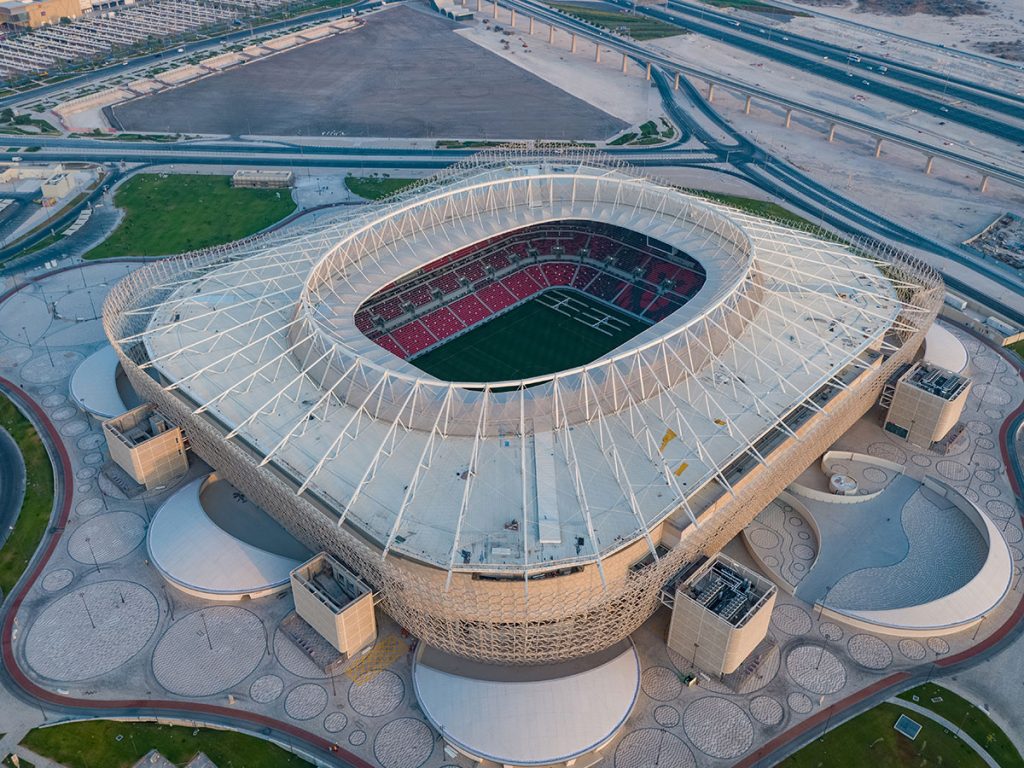
The stadium’s and surrounding buildings’ designs reflect aspects of local culture and traditions. The intricate façade reflects the dunes’ undulations, while intricate geometric patterns reflect desert beauty, native flora and fauna, and local and international trade. The multi-purpose stadium is located in the historic city of Umm Al Afaeiin, Al Rayyan, Qatar. The stadium is popularly known as Al-Rayyan Stadium.
The former stadium was demolished in 2015 and built at 40,000 capacity. The new construction was designed by BDP Pattern and Ramboll. More than 80% of the construction materials came from the previous stadium, and existing trees were carefully preserved. Fans can travel via an environmentally friendly new Doha Metro system.
Al Janoub Stadium
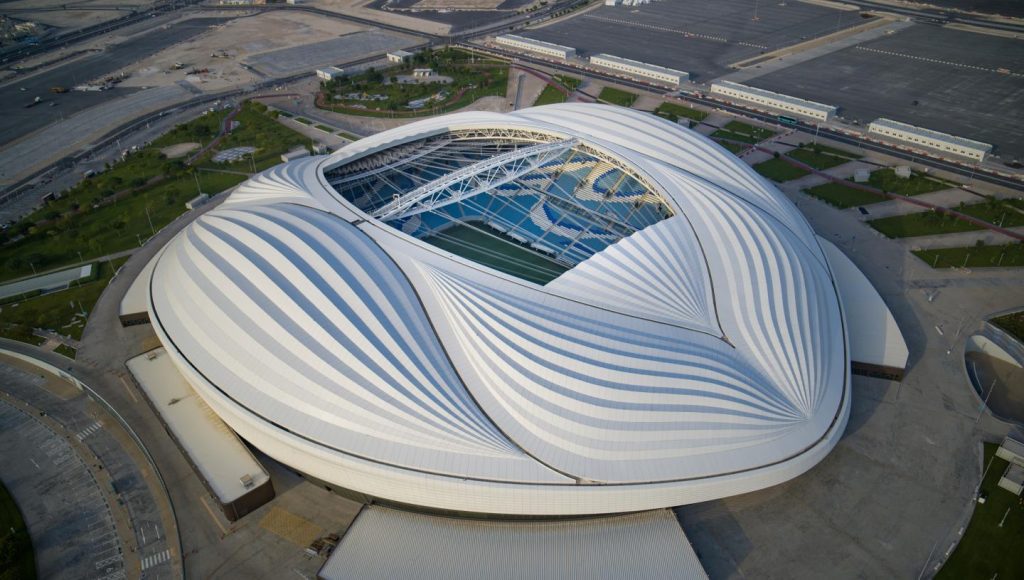
Al Janoub Stadium is located in Al Wakrah, Qatar’s southernmost city and one of the country’s oldest continuously inhabited areas.
The stadium’s captivating design is inspired by the wind-filled sails of traditional dhow boats in Qatar. Also, Al Wakrah has an important fishing and pearl diving past.
Al Janoub’s capacity will be reduced following the tournament, with seats donated to other sporting projects worldwide. This will also ensure a raucous atmosphere for Al Wakrah SC matches. Aside from football, the venue is surrounded by lush parkland with sports and leisure facilities that will benefit the entire community for years to come. This fantastic arena has a bright future.
The stadium was designed by the Zaha Hadid Architects in collaboration with AECOM. Zaha Hadid Architects stated, “The stadium was designed in conjunction with a new precinct so that it sits at the heart of an urban extension of the city, creating community-based activities in and around the stadium on non-event days.”
Al Thumama Stadium

The dynamic and imaginative shape of Al Thumama Stadium honors local culture and traditions. Its bold, circular shape is reminiscent of the gahfiya, a traditional woven cap worn by men and boys throughout the Arab world.
The stadium is located near Hamad International Airport at Al Thumana, Qatar. The stadium was designed by the Chief Architect of the Arab Engineering Bureau, Ibrahim Jaidah, and constructed by Al Jaber Engineering of Qatar and Tekfen Construction of Turkey in 2021.
The stadium has a seating capacity of 40,000 people. Half of the stadium’s seats will be removed after the World Cup and donated to other countries.
Education City Stadium

Education City Stadium is located in Qatar Foundation’s Education City at Al Rayyan, Qatar. The original concept was produced by Fenwick Iribarren and Arup. TheBDP Pattern was appointed in 2016 as the Lead Architects to design and deliver this reference design. Alongside Buro Happold Engineering. The stadium has a 40,000-seat capacity.
The stadium’s cutting-edge design blends in with traditional Islamic architecture. Triangles on the outside form complex diamond-like geometrical patterns that sparkle as the sun moves across the sky. A digital light show illuminates the façade at night, providing fans with a spectacular surprise performance.
Khalifa International Stadium

The stadium was renovated for the FIFA World Cup 2022. The multi-purpose stadium is located in Doha, Qatar. The Khalifa International Stadium, also known as the National Stadium constructed in 1976 by architect Dar Al-Handasah. It was renovated and extended in 2005 for the 2006 Asian Games and hosted the ISF World School Games in 2009. Also, the final of the Asian Cup and the Pan-Arab Games was played in 2011.
After a new extension and renovation, 2014 – 2017, facing the 2022 World Cups, the stadium hosted the 2019 World Athletics Championships. To meet FIFA’s hosting standards, 12,000 seats were added, bringing the total capacity to 40,000.
Stadium 974

Fenwick Iribarren Architects designed the concept of the stadium. Stadium 974 is the world’s first fully demountable covered football stadium, made entirely of 974 recycled shipping containers and modular steel, demonstrating Qatar’s commitment to cost-effective sustainability and daring design.
After the World Cup, the containers will be reused. Also, It is the first temporary venue in FIFA World Cup history.


